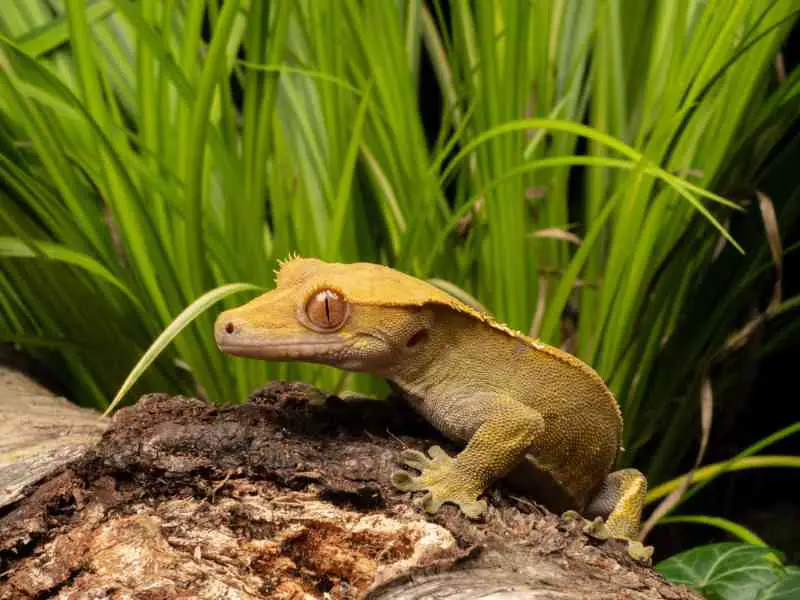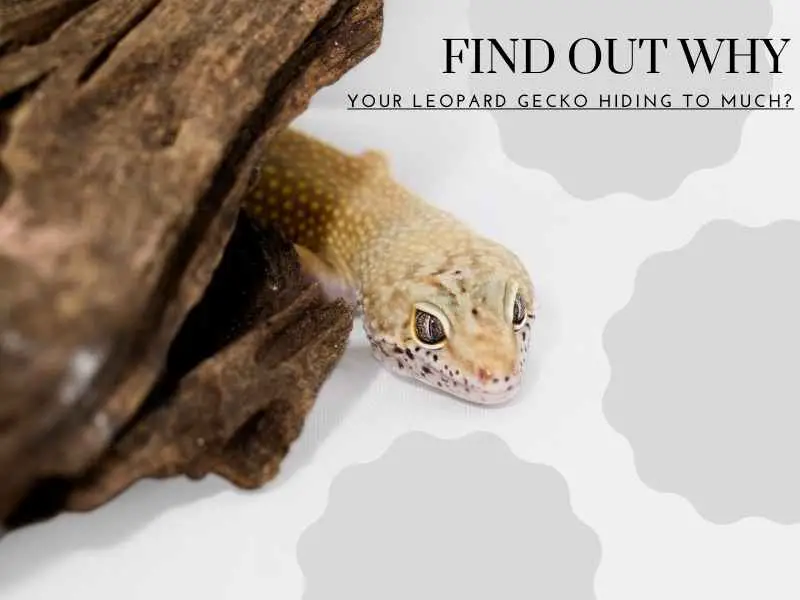Is Gecko Too Thin? Complete Guide to Underweight Geckos

Like every well-intentioned pet owner, you love seeing your gecko be healthy and happy. But what if your gecko looks like it’s too thin? Is this a cause for concern or not?
A fat tailed gecko can be too thin if its hip bones and rib cage are visible alongside a thin underbelly. They will also have a thin tail. However, a thin gecko could also indicate underlying issues related to nutrition, illness, stress and other factors.
If you’re concerned about your fat tail gecko being too thin, then it’s important for you to keep on reading this article as we try and find out what could be making your gecko look too thin.
Contents
How much should my gecko weigh?
If you have a young infant gecko, then it is normal for them to look very thin and that’s including their tail. Young fat tailed geckos are still growing in weight and height and because they’re eating regularly they tend to poop more and not really retain their fats compared to adult geckos.
Hatchlings can be about 2.5-3 inches long and weigh roughly 4 grams. If you have a hatchling gecko that fits this description then it’s probably not something to worry about. As long as it’s eating and is well hydrated then there shouldn’t be any concerns.
Adult geckos can measure seven to nine inches long and will weigh between 45-75 grams. The male geckos typically have larger heads than female geckos and are bigger in size.
If your adult gecko doesn’t fit these measurements then it would be wise to take your gecko to a vet to have a thorough health check.
If your gecko was nice and plump before and has now started to look thin, then you need to be concerned and have your gecko checked out.
Is your gecko eating properly?
It’s important for you to check your gecko is eating the right diet for its age. It is recommended to give live crickets to young geckos that are less than 4 months old on a daily basis. However, some breeders also recommend giving mealworms too. Five to six small size mealworms or crickets per day are usually good for geckos under 4 inches in size. It’s best not to introduce other insects when they’re so young because this could lead to digestive health problems and other illnesses.
As they become adults, they can be given mealworms and crickets more regularly. Adult geckos can be fed 10-12 larger crickets and mealworms from three to five times a week. They can also be given other varieties of insects such as wax worms, super worms and others.
Make sure you’re feeding them regularly because geckos have a relatively high metabolic rate. This means that they cannot go very long without eating meals.
This means that you’ll have to check whether you’re underfeeding your gecko which is quite common if this is your first time looking after a gecko.
Supplementing
Check that you’re supplementing your gecko and gut loading your gecko’s food. Supplements can be in the form of silkworms, pink worms and pinkie mice. These have a high fat content and shouldn’t be given too often.
Gut loading requires each feed to be dusted with calcium powder combined with D3. These geckos aren’t getting access to natural sunlight as they would in the wild so calcium and D3 are essential for their overall health.
Hydration
Make sure your gecko has access to clean fresh water.
If you’ve taken all the right steps when it comes to feeding your gecko and your gecko is eating regularly without any problems, then there shouldn’t really be a weight issue. But if your gecko has stopped eating and has now started to look thin, then it could be a sign of an underlying health issue.
Is your Gecko stressed?
Stress can affect the weight of your gecko too. If a gecko isn’t happy for some reason then it can have an impact on their appetite and weight.
The environment
If your gecko is new then there could be a good chance that it is feeling stressed. Being transported from one environment to another can stress a gecko out. It’s important to make sure the new environment meets all the needs of your gecko. The temperature of your tank plays a huge role in your gecko’s digestive health. A low temperature and lack of humidity can make your gecko cold and stressed and affect its appetite.
Alongside the temperature, make sure that the substrate and other tank furnishings are in good condition and provide a comfortable environment.
It can take a gecko a while to get used to its new environment so you’ll just have to give it some time.
Handling
It’s very tempting to pick up and cuddle your adorable gecko but this can cause it to become stressed. It’s best not to handle a young gecko too often in the first three to five months of its life.
Being with other geckos

If you’ve placed your new gecko with other geckos then they may be a bullying issue that could be a problem. This is more of an issue amongst male geckos. Some dominant geckos do attack other geckos especially when they’re trying to eat. You can check your new gecko to see if it has any scratch or biting marks to see if this is the case because this probably occurs in the evenings or at night when they’re mostly active.
You might find a dominant gecko following the timid gecko wherever it goes and sitting on it. Don’t mistake that for cuddling and immediately separate the two geckos.
A gecko that has been bullied may be traumatized for a while and take a long time to recover from this experience even though it’s been separated from the bully.
Is your gecko sick?
A gecko that is not feeling well will refuse to eat or not eat as much. If you find your gecko is thin and lethargic then it’s important to find out what’s causing this.
Check to see if the temperature in your geckos tank is optimum. If it is too cold then that could impact the overall health of your gecko and affect its appetite.
Stick tail
The term ‘Stick Tail‘ is for a gecko that is losing body mass. This is usually a sign of a disease or illness.
The most noticeable sign is the tail of your gecko. If the tail is not fat like it should be, then this could mean that the gecko is losing weight and something is wrong.
Having a stick tail doesn’t necessarily mean your gecko has a disease but it is one of the first signs that there could be a number of underlying issues at play.
One of these issues could be a parasitic infection.
Cryptosporidium
This is a parasite which can cause intestinal problems such as diarrhoea, loss of appetite, weight loss, and affect growth. Stick tail is one of the symptoms of this infection along with diarrhea, regurgitation, lethargy, and greyish poop.
If you have just bought this gecko and you suspect it has stick tail then it’s important to isolate this gecko and not let it near other reptiles as it could spread and infect them.
It’s always best practice to keep your new pet away from other reptile pets you might have and observe to see if it begins stick tail symptoms along with other symptoms mentioned before.
If you think that stick tail due to parasitic infection could be the case then you should collect the feces and take a sample to your vet for testing.
Key Takeaway
There are many reasons why your fat tail gecko looks thin and not all of them are linked to being sick.
Stress caused by the environment, food, handling and bullying can all cause your adorable gecko to stop eating and lose weight.
Maybe your gecko is still very young and will bulk out as it gets older.
It could be that it just needs some time to adjust to its new home and get comfortable.
If you’ve done everything and you’re still confused then the best thing to do is take your gecko to a qualified vet to get checked out and tested.
Taking the time out to understand why your fat tail gecko looks too thin is the right thing to do and can make a big difference to the overall wellbeing of your gecko.




